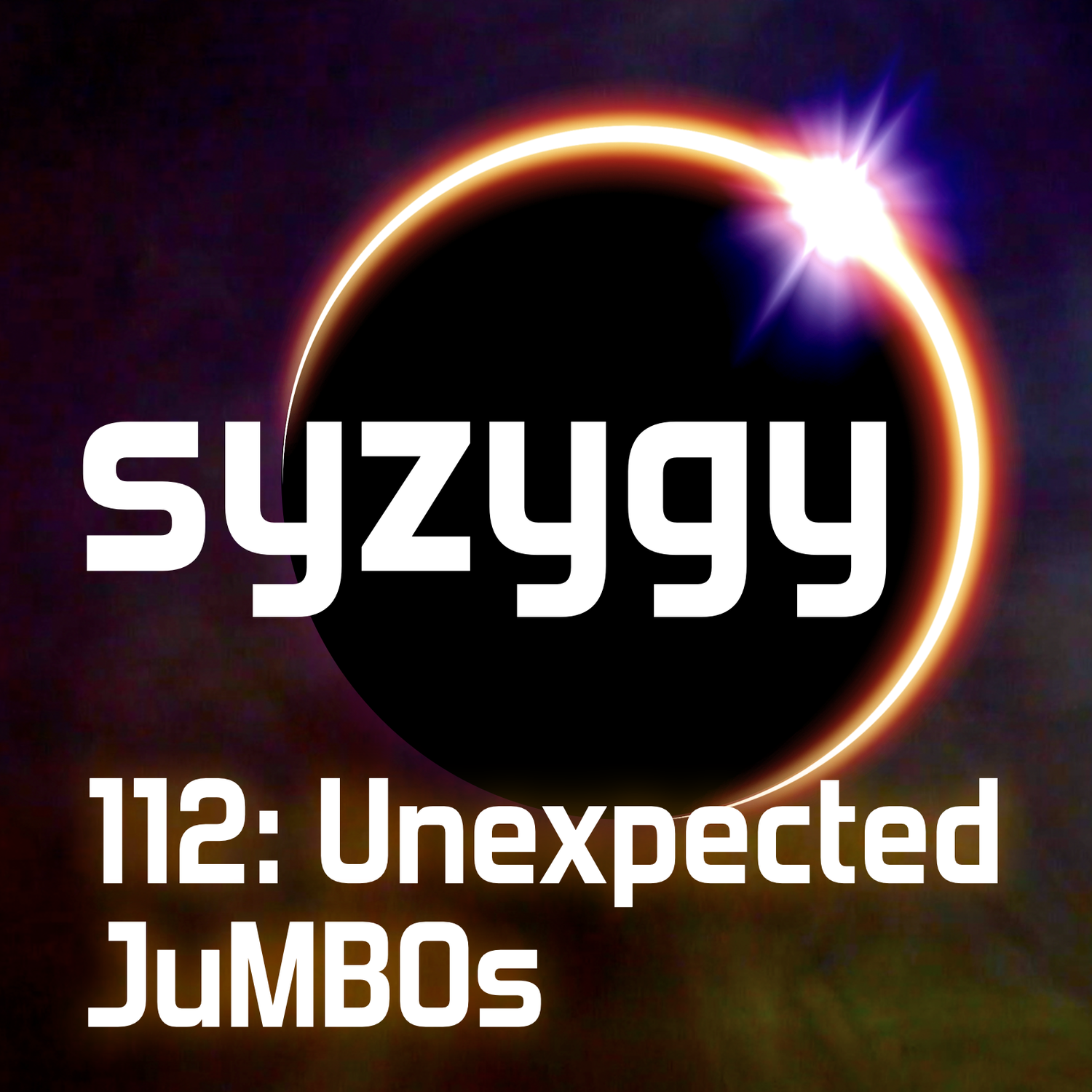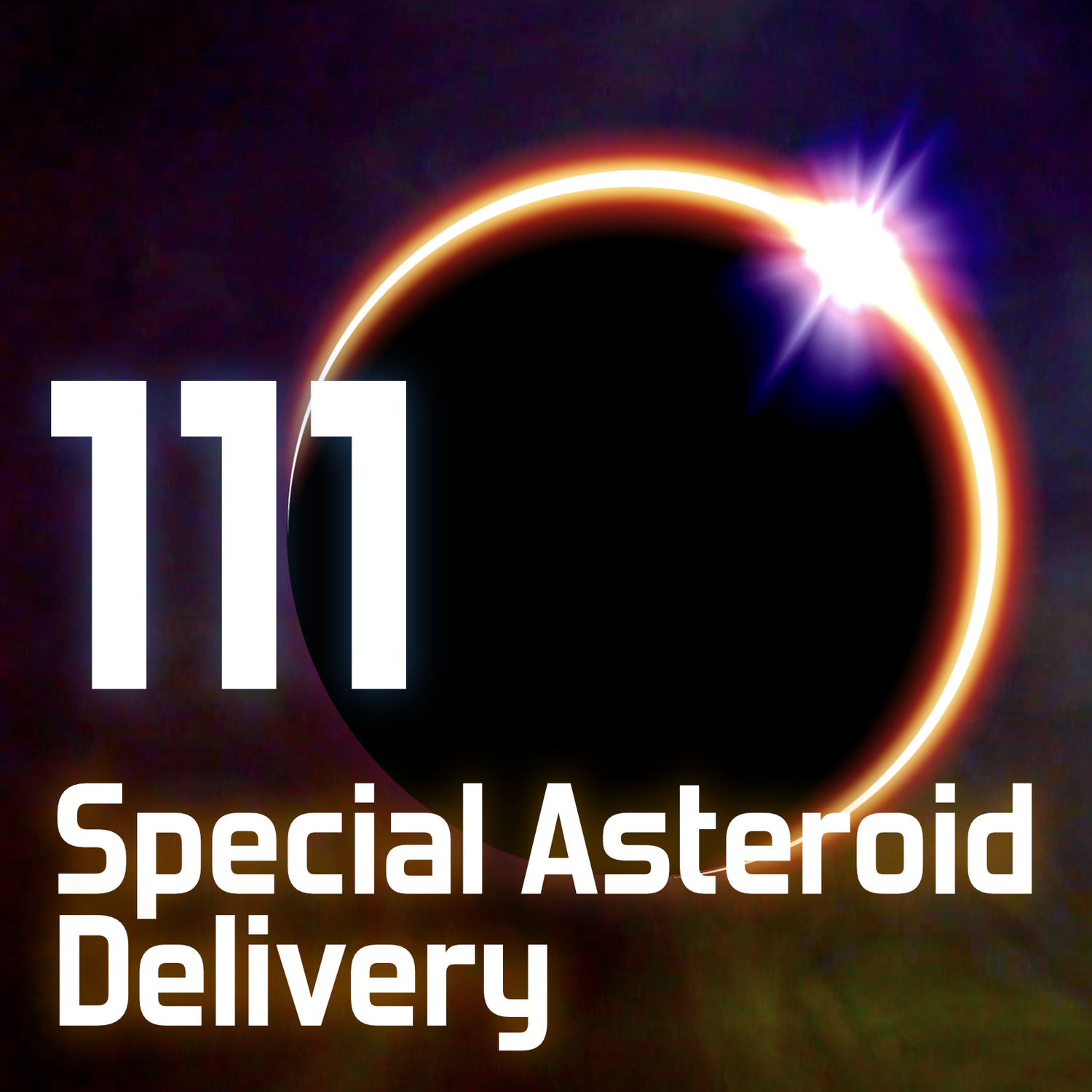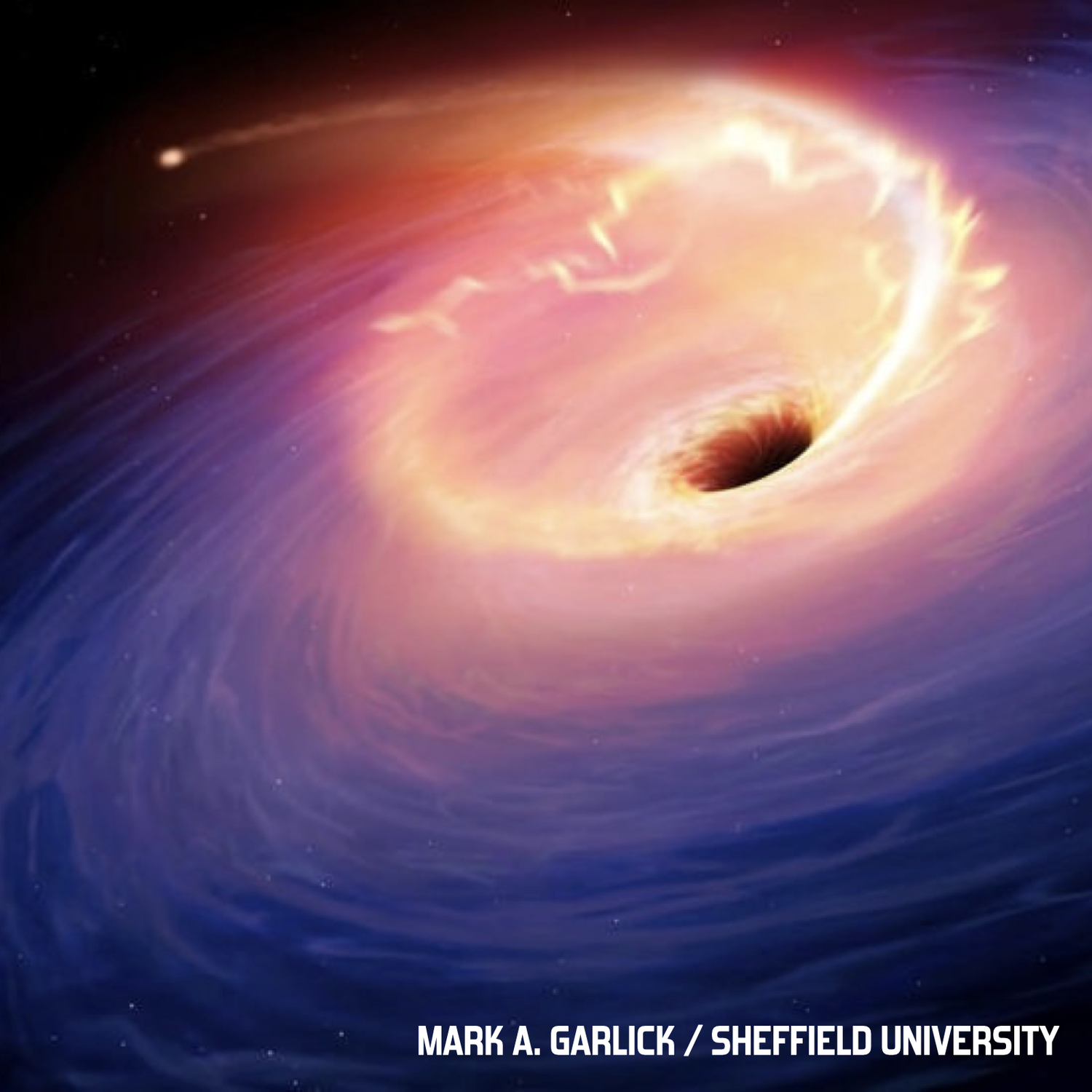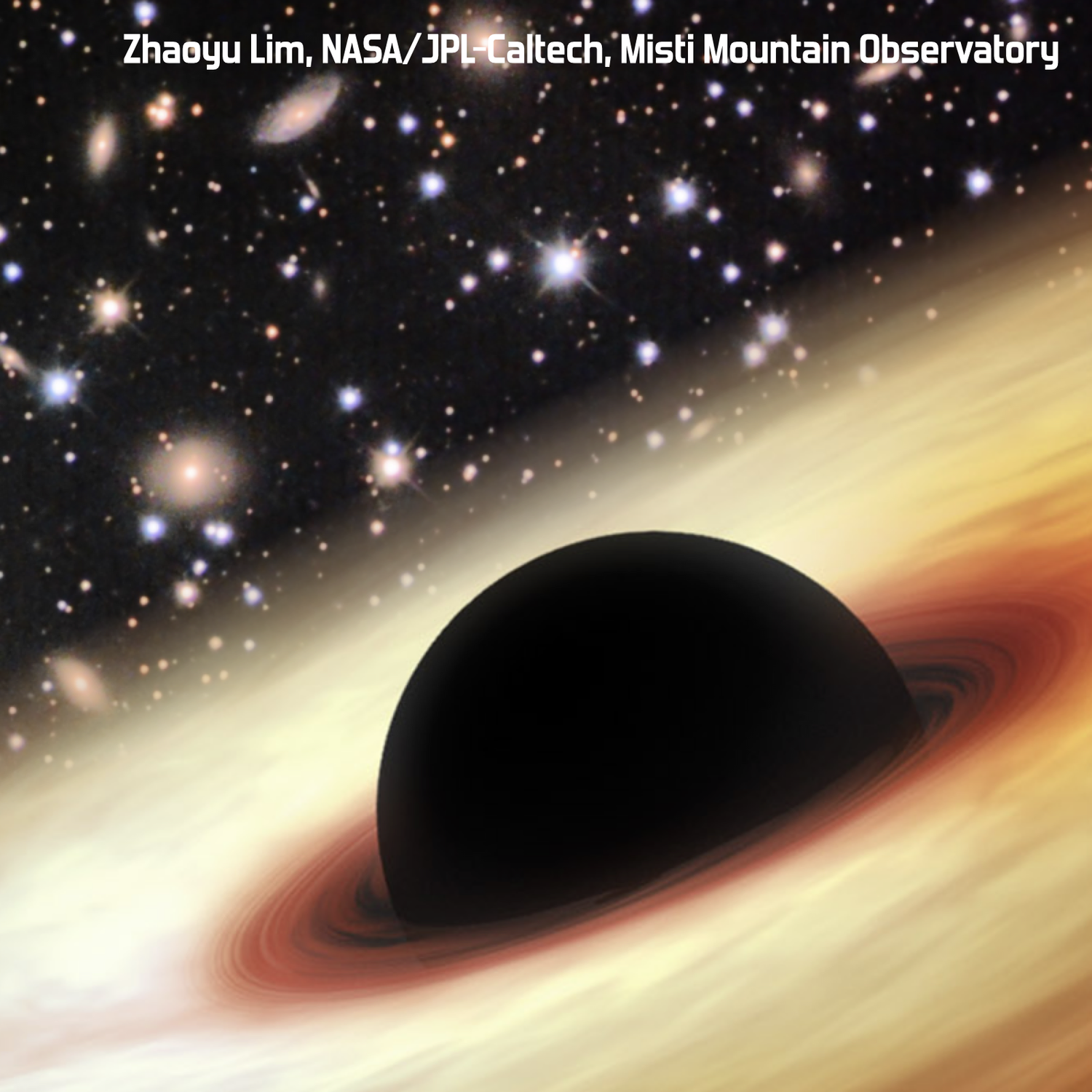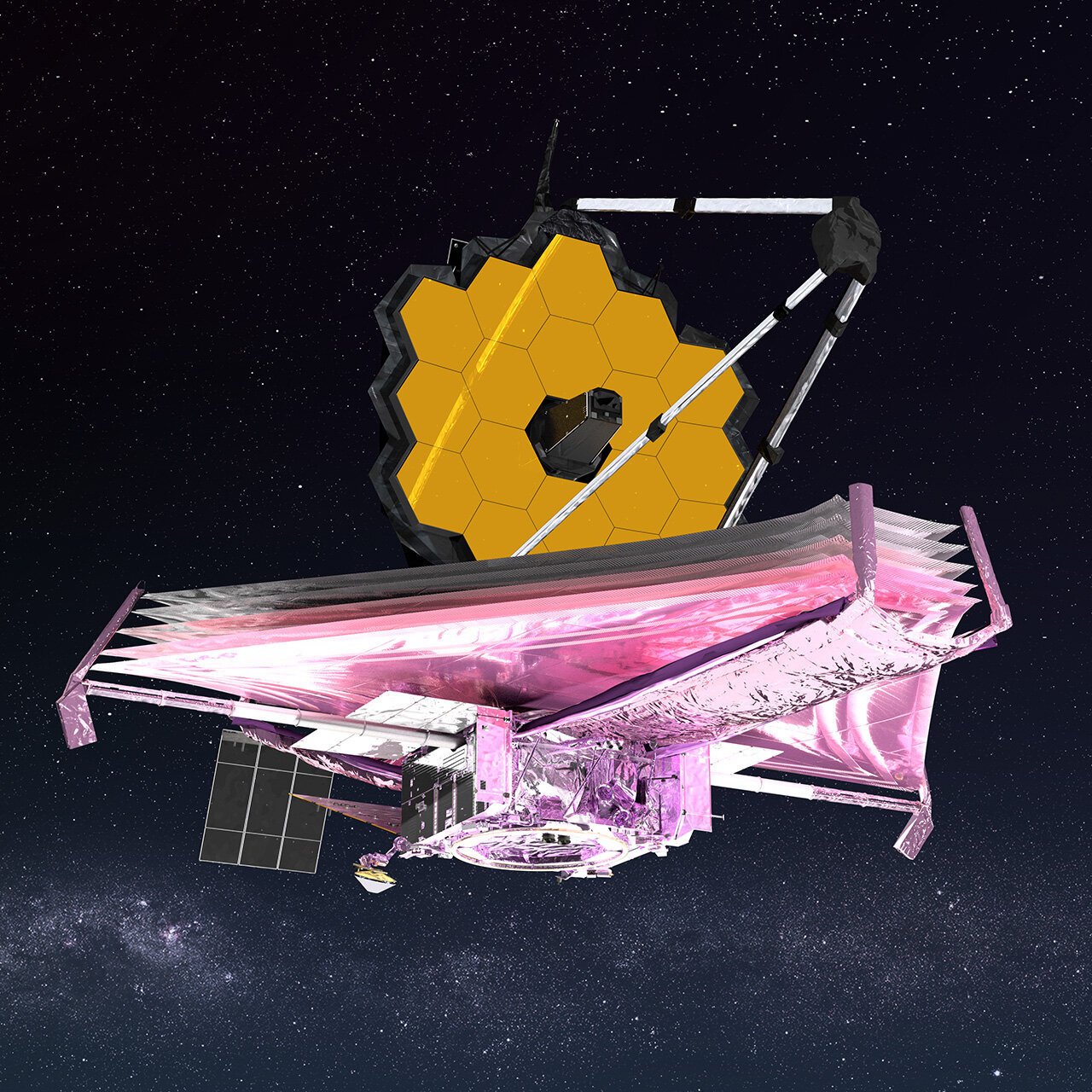Discover syzygy
syzygy

125 Episodes
Reverse
We're live from the 10th birthday celebrations for the University of York's Astrocampus, Emily's home turf and all-round fabulous teaching and outreach space. Emily fields some amazing questions from kids and adults attending the event, and gives some of Astrocampus's highlights and achievements over the past decade, as well as some plans for the future!Help us make Syzygy even better! Tell your friends and give us a review, or show your support on Patreon: patreon.com/syzygypodSyzygy is produced by Chris Stewart and co-hosted by Dr Emily Brunsden from the Department of Physics at the University of York.On the web: syzygy.fm | Instagram & Threads: @syzygypod
After some lengthy follow-up (the Bennu sample is open at last! And SLIM is alive!), Emily investigates possibly the most podcasty story we’ve had on the show: six planets around distant star HD110067, all locked into resonances that play beautiful music. Turns out if you leave a planetary system alone for long enough, gravity tends to pull everything into simple harmonies. Maybe our own solar system has a song to sing in the far future?Help us make Syzygy even better! Tell your friends and give us a review, or show your support on Patreon: patreon.com/syzygypodSyzygy is produced by Chris Stewart and co-hosted by Dr Emily Brunsden from the Department of Physics at the University of York.On the web: syzygy.fm | Instagram & Threads: @syzygypodThings we talk about in this episode:• The Bennu asteroid sample is open! • JAXA SLIM updates • First SLIM images • Sextuplet symphony: The Nature paper • A good article about the discovery • Blog post by Dr Hugh Osborn with exoplanet music video • Trappist-1 system • Orbital resonances • Multiple star systems • JWST finds methane in exoplanet atmosphere • A breathless headline
Emily and Chris tune in to JAXA’s livestream of SLIM — the Smart Lander for Investigating and Moon — as it attempted to slick the landing on the lunar surface on Friday 19 January 2023. We were prepared for success and champagne, or failure and lessons-learned. What we didn’t expect was … ambiguity, uncertainty and WE ARE STILL CHECKING THE STATUS SO PLEASE WAIT. Did SLIM and its fabulous little transformer rovers make it to the Moon OK or not?! Join us for all the anticipation, the wonder, and the confusion in this special syzygy episode.Help us make Syzygy even better! Tell your friends and give us a review, or show your support on Patreon: patreon.com/syzygypodSyzygy is produced by Chris Stewart and co-hosted by Dr Emily Brunsden from the Department of Physics at the University of York.On the web: syzygy.fm | Instagram & Threads: @syzygypodThings we talk about in this episode:• JAXA’s SLIM mission• YouTube livestream recording and press conference• Update article from 3 days later• Mission success!• The SLIM Rovers LEM 1 and LEM 2• Buy your own LEM-2 rover! (Or buy us one, we’d love you forever!)• Upcoming missions to the Moon• India’s Chandrayaan-3 landing• Israel’s failed moon landing• Moss Piglets on the Moon?
Long-time Syzygy listener Jack asks: "Hey Emily — what's the deal with quasi-stars?" (We're paraphrasing). Quasi-stars are hypothetical, enormous stellar-object-thingies that might have formed shortly after the Big Bang. They're so huge they might have formed with black holes at their cores. If they existed at all, it would explain why astronomers keep finding intermediate-mass black holes in gravitational wave experiments. And as a bonus for you, Jack, Emily presents Hawking stars: otherwise ordinary stars that could be hiding a tiny black hole deep in their core. Could the Sun be a Hawking star? The mind boggles.Help us make Syzygy even better! Tell your friends and give us a review, or show your support on Patreon: patreon.com/syzygypodSyzygy is produced by Chris Stewart and co-hosted by Dr Emily Brunsden from the Department of Physics at the University of York.On the web: syzygy.fm | Instagram & Threads: @syzygypodThings we talk about in this episode:• Quasi-stars• (… as opposed to Quasars)• Types of black hole• Intermediate-mass black holes and LIGO• Hawking stars• The research paper that seeded this episode• Asteroseismology, the music of the stars
Astronomers routinely detect cosmic rays, the high-energy particles from space that collide with molecules in the upper atmosphere, creating a shower of secondary particles that rain down on the earth below. But every so often — like, less than once a decade — they spot a cosmic ray smashing into the planet with just stupid amounts of energy. The sort of energy you associate with hitting a golf ball or maybe dropping a brick on your foot, but definitely NOT a single subatomic particle. Not only do astronomers have no idea what could produce these Ultra High Energy Cosmic Rays, one was spotted recently that seems to have originated in one of the emptiest regions of the universe. Emily explains the Strange Mystery of the Cosmic Zevatron.Help us make Syzygy even better! Tell your friends and give us a review, or show your support on Patreon: patreon.com/syzygypodSyzygy is produced by Chris Stewart and co-hosted by Dr Emily Brunsden from the Department of Physics at the University of York.On the web: syzygy.fm | Instagram & Threads: @syzygypodThings we talk about in this episode:• The recent UHERC paper• A good article about the discovery• The Utah Telescope Array• The Oh My God Particle• Cosmic Rays• The Local Group• The Virgo Supercluster• The Local Void
We've talked BOATs before — cosmic events that are the Brightest Of All Time — and it's always a favourite topic on the show. Recently astronomers analysed the runner-up BOAT in the Burster category, an astoundingly violent, weirdly long-lasting, and oddly-located neutron star merger, and measured the amount of afterglow Tellurium to learn more about fast neutron processes. What?! As Emily patiently explains, with a brief cameo from Tom Lehrer, it's all about a deeper understanding of where all the chemical elements in the universe come from.Help us make Syzygy even better! Tell your friends and give us a review, or show your support on Patreon: patreon.com/syzygypodSyzygy is produced by Chris Stewart and co-hosted by Dr Emily Brunsden from the Department of Physics at the University of York.On the web: syzygy.fm | Instagram & Threads: @syzygypodThings we talk about in this episode:• Research paper• Overview of the research• Syzygy episodes with BOATS:— Episode 30: Stardust or Cosmic Poo— Episode 61: Biggest Bag Ever!— Episode 107: Biggest Bang Ever! (Again)• Nucleosynthesis• The rapid neutron capture process• … as opposed to the slow neutron capture process• Tom Lehrer’s Elements song• Binding Blocks• The actual BOAT
We love it any time a listener gets in touch — but the *best* is when a listener suggests a topic for an episode of the podcast. So when Zofia Szczesna got in touch (through the Syzygy website, natch) and asked about white dwarf stars, Emily put her research hat on and dug into the amazing astrophysics of these amazing little entities. In this episode she lists her three favourite things about white dwarfs: a cheeky supernova loophole, wibbly-wobbliness, and our white dwarf (or more accurately, black dwarf) future.Help us make Syzygy even better! Tell your friends and give us a review, or show your support on Patreon: patreon.com/syzygypodSyzygy is produced by Chris Stewart and co-hosted by Dr Emily Brunsden from the Department of Physics at the University of York.On the web: syzygy.fm | Twitter: @syzygypodThings we talk about in this episode:• Osiris Rex’s recent little problem• White dwarf stars• Degenerate electrons and neutrons• The Chandrasekhar limit• Types of supernovae• Variable stars• Proton decay• Black Dwarfs
JWST is flinging out Just Wonderful observations at great speed, many already leading to new astronomical insights. Here's one that was really unexpected: the Orion Nebula is full of JuMBOs! Jupiter-Mass Binary Objects, that is — pairs of giant planets (or planetty-things, the definition isn't terribly clear ...) floating free in space, in quantities that aren't possible based on what we *thought* we understood about planet formation. New observations that seem to break astrophysics? We're always up for that discussion!Help us make Syzygy even better! Tell your friends and give us a review, or show your support on Patreon: patreon.com/syzygypodSyzygy is produced by Chris Stewart and co-hosted by Dr Emily Brunsden from the Department of Physics at the University of York.On the web: syzygy.fm | Twitter: @syzygypodThings we talk about in this episode:• The Fibonacci Sequence• The JuMBOs papers: overview, and JuMBO-specific• The Orion Nebula• JWST gets a good look at the Orion Nebula• Where is the Orion Nebula, exactly?• The definition of “planet"
Earth got a special delivery recently: a little pod plonked down in the Utah desert, containing a few hundred grams sampled from the surface of an asteroid. This isn't the first sample return mission, but it's definitely the biggest. The little parcel of asteroid dirt inside is now being very carefully handed out to researchers across the globe, and we're going to learn loads of important stuff, like what asteroids are made of, how we might stop one from hitting us ... and even, maybe, just maybe, whether they contain the building blocks of life.Help us make Syzygy even better! Tell your friends and give us a review, or show your support on Patreon: patreon.com/syzygypodSyzygy is produced by Chris Stewart and co-hosted by Dr Emily Brunsden from the Department of Physics at the University of York.On the web: syzygy.fm | Twitter: @syzygypodThings we talk about in this episode:• The OSIRIS-REx mission• Landing in the desert (NASA video stream)• Grabbing the sample in 2020• Sample return missions• Asteroid Bennu• OSIRIS-APEX• Asteroid Apophis• The Asteroid Belt
It’s always nerve-wracking waiting for a very expensive new space telescope to launch — the whole mission can literally end in a highly explosive blink of an eye. Fortunately for the Euclid mission team, their gleaming new spacecraft left the Earth in one piece, and made its way to L2 to begin it's new job. It’s mission? Oh, just to solve five huge mysteries of the universe, from the nature of dark matter and dark energy, to unravelling the threads of the cosmic web.Help us make Syzygy even better! Tell your friends and give us a review, or show your support on Patreon: patreon.com/syzygypodSyzygy is produced by Chris Stewart and co-hosted by Dr Emily Brunsden from the Department of Physics at the University of York.On the web: syzygy.fm | Twitter: @syzygypodThings we talk about in this episode:• Telescopes up a mountain in Hawaii• The Euclid Mission website• The Launch!• Euclid’s Big Five• Streaming data from L2• Euclid’s first test images• Dark Matter & Dark Energy• The Cosmic Web• Fly-through of the Cosmic Web
Every so often, a Syzygy listener writes in with a cracking question that sends Emily and Chris off spelunking down the deep, deep sinkholes of astronomy and cosmology. This time, listener Eve asked an absolute cracker, to wit: Just how much energy is there in the universe right now? A simple question at first glance. At second glance (and every glance thereafter) it's not simple at all. We need to first consider, what is energy? What is the universe? And even, what is "now"? It's very confusing.Help us make Syzygy even better! Tell your friends and give us a review, or show your support on Patreon: patreon.com/syzygypodSyzygy is produced by Chris Stewart and co-hosted by Dr Emily Brunsden from the Department of Physics at the University of York.On the web: syzygy.fm | Twitter: @syzygypodThings we talk about in this episode:• Feynman’s discussion of energy• Dark matter• Dark energy• The observable universe• Critical energy density• Is the energy in the universe zero?• The Big Bang Singularity• The fates of the universe
Everyone's favourite bonkers red giant is back in the news again, and it has the supernova spotters in a froth. Last time we talked about Betelgeuse, it had gone unusually dim. Never fear, it's back with a vengeance — not just brighter, but pulsing twice as fast! Is the end nigh? Can we expect it to go boom soon? Well ... define 'soon'. Emily has all the answers.Help us make Syzygy even better! Tell your friends and give us a review, or show your support on Patreon: patreon.com/syzygypodSyzygy is produced by Chris Stewart and co-hosted by Dr Emily Brunsden from the Department of Physics at the University of York.On the web: syzygy.fm | Twitter: @syzygypodThings we talk about in this episode:• The Betelgeuse paper• A good article on what’s going on with Betelgeuse• The Great Dimming• The brightest stars in the sky• Indigenous peoples have known about variable stars for a very long time• Could we spot a supernova coming?
Astronomers have spotted what seems to be a supermassive black hole devouring a huge gas cloud — and in the media it's being claimed as the Biggest Explosion in the History of Explosions. Except, is it though? And didn't we already talk about this, way back in Episode 61? And anyway, what does "biggest" even mean? Or "explosion", for that matter? Or "time"? It's all very confusing. Emily's here to make sense of it all.Syzygy Merch! Get it at the store.Help us make Syzygy even better! Tell your friends and give us a review, or show your support on Patreon: patreon.com/syzygypodSyzygy is produced by Chris Stewart and co-hosted by Dr Emily Brunsden from the Department of Physics at the University of York.On the web: syzygy.fm | Twitter: @syzygypodThings we talk about in this episode:• The research paper• A good article about the story• The OG Episode 61: Biggest Bang Eva!• Energy units, including ergs and joules• Gamma Ray Bursts• The Gamma Ray Burst of 2022• BOATS (and GOATS)• Vale D Alexander Kann
Like many of us, as some stars get older, they get bigger. Like, really big. Big enough to swallow up any planets orbiting near by. Astronomers have known this for a while now, but they'd never actually seen it happen ... until now. Emily explains what's going on, what's been observed, why a planet-gobbling star seems the only real explanation, and what it all means for the Earth's distant future.Syzygy Merch! Get it at the store.Help us make Syzygy even better! Tell your friends and give us a review, or show your support on Patreon: patreon.com/syzygypodSyzygy is produced by Chris Stewart and co-hosted by Dr Emily Brunsden from the Department of Physics at the University of York.On the web: syzygy.fm | Twitter: @syzygypodThings we talk about in this episode:• The original paper by De et al• A good article about the research https://time.com/6276702/star-eating-a-planet/• The Zwicky Transient Facility https://www.ztf.caltech.edu• NASA's NEOWISE telescope https://neowise.ipac.caltech.edu• Really big stars• Comet Shoemaker-Levy-9
In 2023, the Moon is where it’s at — so many rockets taking so many little orbiters and landers and rovers and boxes full of weird trinkets ... just in the coming few months! And that’s before you even count the missions aimed at pushing human footprints into the lunar dust for the first time since the early 70s. Everyone and their dog is sending stuff to the moon, and Emily is here with all the details of six missions set to launch in the coming Northern Spring-Summer launch season.Syzygy Merch! Get it at the store.Help us make Syzygy even better! Tell your friends and give us a review, or show your support on Patreon: patreon.com/syzygypodSyzygy is produced by Chris Stewart and co-hosted by Dr Emily Brunsden from the Department of Physics at the University of York.On the web: syzygy.fm | Twitter: @syzygypodThings we talk about in this episode:• Missions to the Moon — past, present and future• JUICE• Astrobiotic’s Mission One• The Lunar X Prize• Intuitive Machine’s IM-1 mission• Chandrayaan 3• Luna 25• JAXA’s SLIM• The Artemis program
The biggest black hole ever has been found — not supermassive, but *ultra*massive. Emily takes Chris on a tour of all the types of black hole, from the speculative minis, through the solar and intermediate mass kinds, to the stonking supermassive and frankly ludicrous ultramassive. And we ask, how exactly do you see a black hole when it's ... you know ... black?Syzygy Merch! Get it at the store.Help us make Syzygy even better! Tell your friends and give us a review, or show your support on Patreon: patreon.com/syzygypodSyzygy is produced by Chris Stewart and co-hosted by Dr Emily Brunsden from the Department of Physics at the University of York.On the web: syzygy.fm | Twitter: @syzygypodThings we talk about in this episode:• The ultramassive black hole paper• Article about the research• Mini black holes• Will the LHC destroy the Earth?• Stellar mass black holes• Intermediate mass black holes• LIGO and Black hole mergers• Supermassive black holes• That black hole photo• Squeezars• The biggest black holes• Hubble Space Telescope• Gravitational lensing• Euclid, LSST and the SKA
In the hunt for life in the universe, astronomers are looking hard at the catalogue of potentially habitable exoplanets. The ones orbiting Red Dwarf stars seem promising — Red Dwarfs are really common, and we've just launched a shiny new space telescope that's perfect for observing them, their planets, and even their planets *atmospheres*. Trouble is, Red Dwarf stars are ... nasty. Like, really mean. Emily gives all the details on why we might not be discovering signs of life near a Red Dwarf any time soon.Syzygy Merch! Get it at the store.Help us make Syzygy even better! Tell your friends and give us a review, or show your support on Patreon: patreon.com/syzygypodSyzygy is produced by Chris Stewart and co-hosted by Dr Emily Brunsden from the Department of Physics at the University of York.On the web: syzygy.fm | Twitter: @syzygypodThings we talk about in this episode:• What tThe Red Dwarf paper• Article about the research• Red Dwarf stars• Flares, sunspots and coronal mass ejections• CMEs are terrifying• Everyone’s fave spectrograph, HARPS• JWST & exoplanets
"These six galaxies break cosmology!" scream the headlines. Yeah, nah — yeah, astronomers have found some galaxies in the JWST data that are crazy old, and yet seem to be just way too big. But nah: this doesn't mean cosmology is broken. As usual, the scientists ignore the click-baity headlines, roll their eyes and get on with figuring it all out. Plus, what time is it on the Moon? Not a simple question.Syzygy Merch! Get it at the store.Help us make Syzygy even better! Tell your friends and give us a review, or show your support on Patreon: patreon.com/syzygypodSyzygy is produced by Chris Stewart and co-hosted by Dr Emily Brunsden from the Department of Physics at the University of York.On the web: syzygy.fm | Twitter: @syzygypodThings we talk about in this episode:· What time is it on the Moon?· Universe-breaking galaxies (Nature paper)· Guardian article about the research· JWST, our second favourite space telescope· Redshift, distance and time· Lyman Break Galaxies· The Hubble OG, Ultra and eXtreme Deep Fields· JWST: Hold-My-Beer Deep Field
The Earth's core has been acting weird for at least 70 years now. We're not sure why, but sometimes it's spinning faster than the surface, sometimes slower. Emily explains how we know what's happening down in the core, which is impressive enough ... but then she shows how astronomers do the same for very distant stars, and Chris's head explodes. Plus, it's been a big week for aurora fans, and there's even some bonus Einteinian weirdness at the end.Syzygy Merch! Get it at the store.Help us make Syzygy even better! Tell your friends and give us a review, or show your support on Patreon: patreon.com/syzygypodSyzygy is produced by Chris Stewart and co-hosted by Dr Emily Brunsden from the Department of Physics at the University of York.On the web: syzygy.fm | Twitter: @syzygypodThings we talk about in this episode:· The Earth’s core rotation speed paper· A good article about it· Big week for aurora fans· Changes in the Earth’s magnetic field over time· Different definitions of a day· Asteroseismology (SciShow Space video)· The Doppler Effect for sound and light· Relativity and GPS (MinutePhysics video)
Emily's back from New Zealand, Chris is ... still just around, really. And Syzygy returns from hiatus with Episode 100, looking back on a huuuuuge year for the Just Wonderful Space Telescope. Emily takes us through the five "first-light" images released from JWST several months ago — plus one little bonus image that they found behind the couch. (Oh, and sorry for the audio quality on this one — for boring technical reasons we had to share one microphone ... Back to our usual high-quality production values for 101!)Syzygy Merch! Get it at the store.Help us make Syzygy even better! Tell your friends and give us a review, or show your support on Patreon: patreon.com/syzygypodSyzygy is produced by Chris Stewart and co-hosted by Dr Emily Brunsden from the Department of Physics at the University of York.On the web: syzygy.fm | Twitter: @syzygypodThings we talk about in this episode:• JWST on the web: NASA and ESA• JWST launch video• Lagrange points • JWST’s orbit at L2• JWST first images• Image 1: Webb’s First Deep Field• Image 2: Carina Nebula• Image 3: Stephan’s Quintet• Image 4: Southern Ruing Nebula• Image 5: WASP-96 b• Surprise extra image: Jupiter!• Conference info: First Science Results from JWST, Dec 2022









